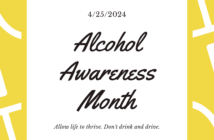On July 17, 1984, Congress passed the National Minimum Drinking Age Act. Since then, the United States remains one of just a few developed countries in which the legal drinking age is over 18. However, does maintaining the higher drinking age encourage enough positive consequences to keep it unchanged, or should it be lowered?
The world’s average legal drinking age is 15.9, and it varies by country. While some countries do not have any laws that state at what age people are allowed to drink alcoholic beverages, in other parts of the world, alcohol consumption is banned completely.
The vast majority of the developed countries set their legal drinking age to 18, and some countries, such as Germany, Denmark, and Belgium, allow consumption of light alcoholic beverages at the age of 16.
In fact, in the past, in most of the states in the U.S, the legal drinking age was 18, as well. The reason for that was that the age of 18 was the national age of adulthood, and that age has not been changed since then. Therefore, the 18 year-old teenagers were granted all of the privileges of adult citizens of the United States, but they still could not buy alcohol.
Since people at the age of 18 were considered responsible enough to be full-fledged Americans, which included being able to vote or serve the country in the military, by the late 1970s, many states decided to lower the legal drinking age from 21 to 18.
The situation changed when several studies showed that the alcohol-related car crashes among people younger than 21 increased. The states that previously lowered their legal drinking age began to reverse their laws and set the age to 21 again. The changes were also a result of the campaign of a national organization Mothers Against Drunk Driving, which became very popular in the country after it was founded in 1980.
In fact, one of the studies titled “The effects of minimum legal drinking age 21 laws on alcohol-related driving in the United States” found that increasing the drinking age to the previous level had a very positive result on the number of alcohol-related car crashes.
While in 1982 the percentage of fatally injured drivers at the age between 16 and 21 who had a positive blood alcohol content was equal to 61 percent, in 1995 when the legal drinking age was 18 again, the percentage dropped to 31 percent.
The study indicated that there is a definite relationship between the minimum legal drinking age and the number of highway crashes. Also, it states that there is no evidence that alcohol education could replace the effect of the legal drinking age of 21, and therefore, it should not be lowered.
However, it has also been proven that traffic accidents are very common among newly legal drinkers, and the minimum legal drinking age does not make any difference.
Therefore, is the low drinking age an actual issue or is the problem that drunk driving is a result of trying the “forbidden fruit”, which in this case is the alcohol that the teenagers could not drink legally before?
No matter what the answer is, the statistics clearly show that a higher drinking age reduces traffic accidents. The National Highway Traffic Safety Administration estimated that from 1975 to 2008 the number of fatal traffic accidents for 18 to 20-year-old drivers decreased by 13 percent and saved approximately 27,052 lives.
On the other hand, the minimum legal drinking age is not related to driving only. Even though it helps to decrease the number of accidents on highways, it does not mean that making the alcohol legal only for those people who are 21 years old resolved all issues related to drinking and did not have any negative consequences.
Raising the legal drinking age to 21 did not change the fact that teenagers who are younger consume alcoholic beverages. The underage drinking is a problem, and the truth is that raising the minimum legal drinking might have contributed to the issue.
Because underage drinking is illegal, the teenagers who decide to break the law and consume alcohol have to hide, and they might drink it in places which are more dangerous that the regular settings designated for the consumption. The teenagers consume the alcohol away from adults, and because many times they are not educated enough to do it safely, such happening might have very serious consequences.
According to the National Center on Addiction and Substance Abuse, underage drinking accounts for 17.5% of consumer spending for alcohol in the United States. Also, one of the studies presented that in 2006, 72.2 % of twelfth graders admitted that they have consumed alcohol at some point in their lives.
The statistics clearly present that the minimum legal drinking age does not indicate when the teenagers actually start drinking, for many of them decide to consume alcohol before they turn 21 even though it is illegal.
They also present that, for underage drinkers, it is relatively easy to get the alcohol and break the law. The concern that might arise is that if breaking the law through underage drinking is so easy and many times without consequences, can it encourage the teenagers to break the law in other ways?
Even though it is hard to answer this question, it is a fact that lowering the age from 21 to 18 would reduce the underage drinking rates, for more people would be legally allowed to drink. Therefore, if underage drinking is indeed an encouragement to breaking the law on other fields, changing the minimum legal drinking age could somewhat resolve the issue.
Another problem that is associated with alcohol is binge drinking among college or even high school students. Excessive drinking is a common problem in college parties, and it might have its roots in the United States’ history and the country’s drinking culture during the time of prohibition.
Between the years of 1920 and 1933 when the alcohol was banned in the whole nation, it was quite popular to drink as much and as quickly as possible, for it was illegal, and people who were drinking did not want to be caught while doing it. Consuming alcohol quickly reduced the risk of being seen by others so that the drinkers did not suffer any consequences of breaking the law.
Even though there is no prohibition in the United States anymore, drinking alcohol quickly and in large amounts not only is still present in the culture, especially among college students, but it seems like it is becoming more and more popular.
According to the National Institute on Alcohol Abuse and Alcoholism, in 2013, nearly 39 percent of all college students who were between 18 and 22 years old engaged in binge drinking. Moreover, the same institution indicates that about 20 percent of college students meet the criteria for an Alcohol Use Disorder.
It is worth noticing that the range includes students who were not legally allowed to drink; therefore, the statistics might make some people wonder whether it makes any sense to maintain the current minimum legal drinking age if people do not follow the law.
What if the banning of alcohol for those who are under 21 years old is the problem itself? There is a chance that similarly to the times of prohibition, for those who are not legally allowed to drink, alcohol is the forbidden fruit that they really want to try.
Therefore, every time these people have a chance to drink, instead of doing it responsibly, they indulge and consume the alcohol excessively. Also, for those who eventually achieve the minimum legal drinking age, the fact that they can finally drink legally might be an encouragement to engage in binge drinking, as well. In such cases, the longer the period of waiting, the more pleasurable is the consumption when it is ultimately possible and legal.
On the other hand, some people argue that lowering the legal drinking age would not resolve the issue because teenagers are not responsible enough to drink alcohol. Also, it is true that consuming alcohol at a young age might have many medical consequences including interference with brain development or greater vulnerability to addiction.
Also, lower the minimum drinking age exposes more teenagers to the alcohol because sometimes those who are legally allowed to drink buy alcohol for those who are not and cannot do it by themselves. Consequently, the lower minimum drinking age might also contribute to underage drinking to some extent.
It is hard to predict what would be other consequences of changing the law, and the idea of lowering the legal drinking age has as many opponents as supporters. Comparing the United States with other countries is not always a good idea as well, due to the cultural differences.
Even though lower drinking age might bring positive results to countries like Italy or France where even children are served little amounts of wine, it might not necessarily be as successful here in America.
Nevertheless, the important factor that might contribute to the success in fighting alcohol-related problems is education. Teenagers who are educated about the consequences of drinking alcohol are capable of doing it responsibly, but the key to making the education process successful might be the approach that would encourage the young adults to engage in the process.




